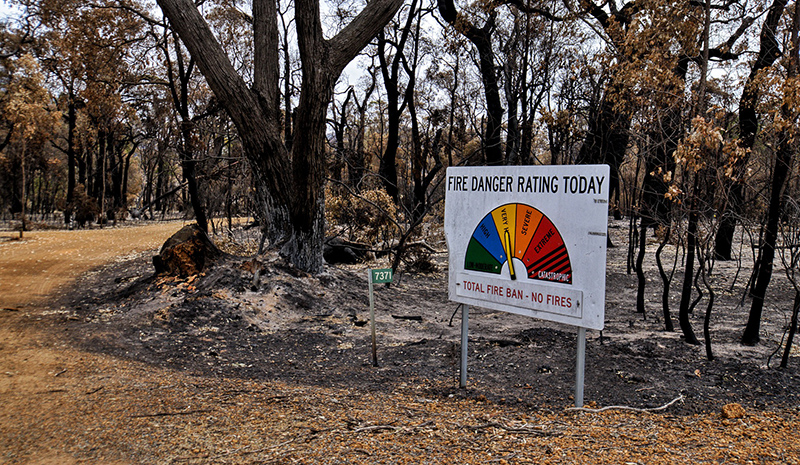
Bushfires can have a considerable impact on our health, with some symptoms lasting long after the flames are extinguished. And our children are amongst the most vulnerable.
The Department of Fire and Emergency Services is on high alert this week with hot and windy conditions likely to result in more bushfires.
As fires continue to burn around Perth and WA, experts from the Wal-yan Respiratory Research Centre – a powerhouse partnership between The Kids Research Institute Australia, Perth Children’s Hospital Foundation and Perth Children’s Hospital – have some advice to help protect your family’s lung health this week and throughout summer.
Physical health
Wal-yan Respiratory Research Centre researcher Professor Graham Hall, who is also the co-head of The Kids Children’s Lung Health team, said exposure to smoke and polluted air posed serious health risks, particularly to children, pregnant women and those with existing heart and lung conditions.
“Children’s lungs are still developing and therefore are more sensitive to the microscopic particles that are in the air,” Professor Hall said.
Itchy eyes, sore throat, running nose and coughing are all signs of smoke irritation but children with pre-existing heart or lung conditions are at a greater risk because they will feel the effects more.
“Children with asthma are more likely to experience wheezing, chest tightness and difficulty breathing while smoke is around, more than those who don’t,” Professor Hall said.
“Exposure to air pollution can also impact on the development of unborn babies. Pregnant women should consider ways to minimise their exposure to the smoke as much as possible.”
How you can protect your family
Wal-yan Centre researcher and The Kids Head of Respiratory Environmental Health Associate Professor Alexander Larcombe advised those in affected areas to avoid smoke exposure by staying indoors with the windows and doors closed and the air conditioner on recycle mode to reduce smoke coming into the house. He said in addition to poor air quality, the heat can also cause issues for people with pre-existing heart and lung conditions, such as asthma.
He urged those that have a heart or lung condition who may have concerns or are experiencing increased symptoms to speak with their GP.
Here are his top tips to help reduce the health impact of smoke exposure:
- Children with a heart or lung condition, such as asthma, should follow the treatment plan and keep extra medication on hand.
- Limit outdoor exercise and activities during peak periods of air pollution. Exercising draws in more air to our lungs, and if the air is polluted it puts us at a greater risk. Indoor gyms and play centres are a great alternative.
- You may also want to consider wearing a face mask during peak periods of air pollution. When it comes to the use of face masks, only P2/N95 rated face masks can protect against smoke exposure. It’s worth noting however that these are not designed to fit children.
- Those with pre-existing conditions should take additional rest periods to allow the body to recover.
- While smoke can still penetrate inside the home, it’s still safer than being outdoors. You can create a cleaner environment by taking measures to block drafts, vents etc.
- If the air-conditioner is on, switch it to the recycle mode to reduce smoke coming inside.
Air pollution
Last summer’s bushfire crisis in the eastern states saw air pollution climb to more than 10 times hazardous level in some areas of New South Wales and Victoria, causing a dramatic spike in emergency department admissions for asthma or breathing problems.
So far, WA authorities are not predicting similar impacts from the blazes burning around Perth and Lancelin.
Assoc Prof Larcombe said that while our body’s defence mechanisms can generally cope with short periods of smoke exposure – it’s a concern when this exposure is ongoing.
“The ultrafine particles in the air from the bushfires can go deep into the lungs and cause serious inflammation. Some of these fine particles are also able to enter the blood stream and can impact other organs, including the brain and cardiovascular system,” Assoc Prof Larcombe said.
